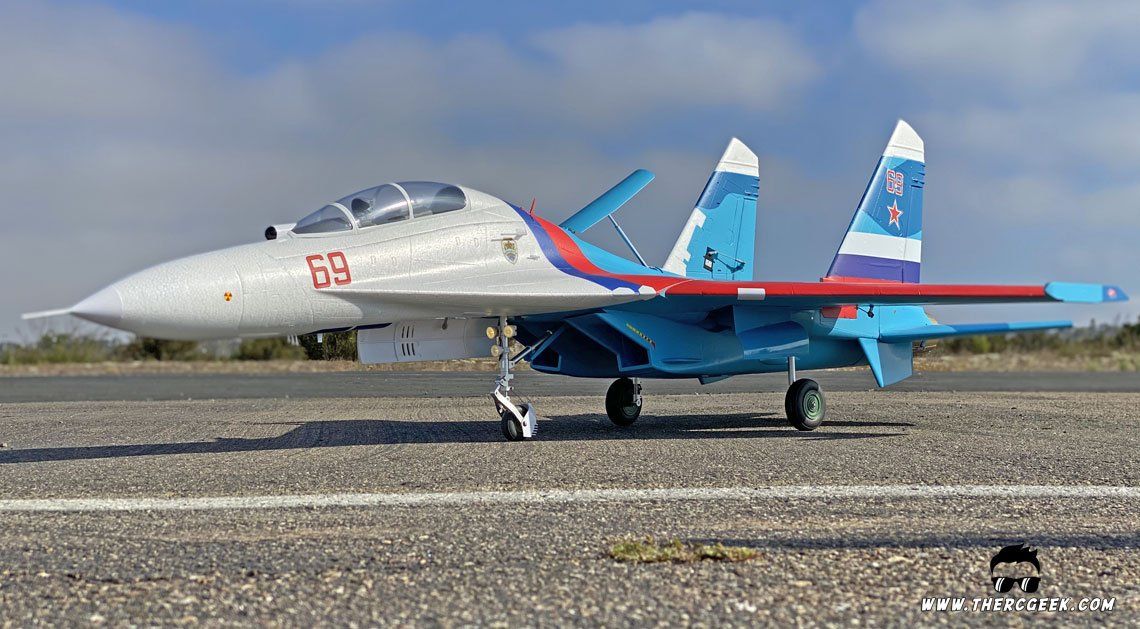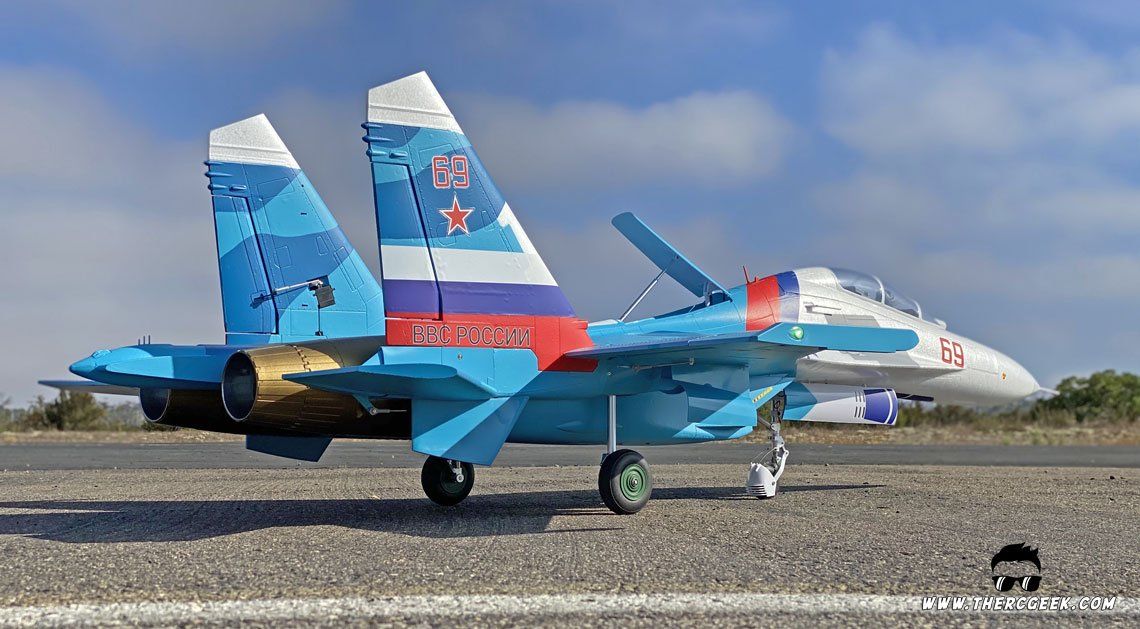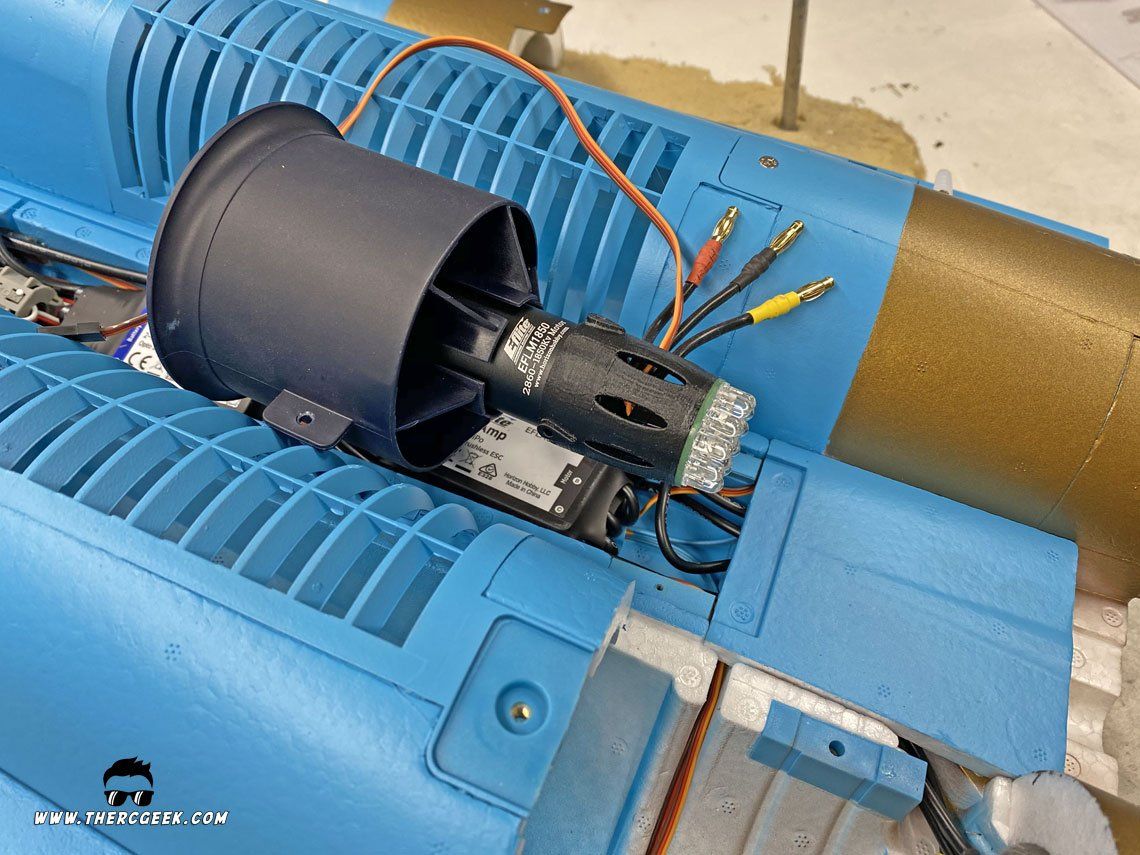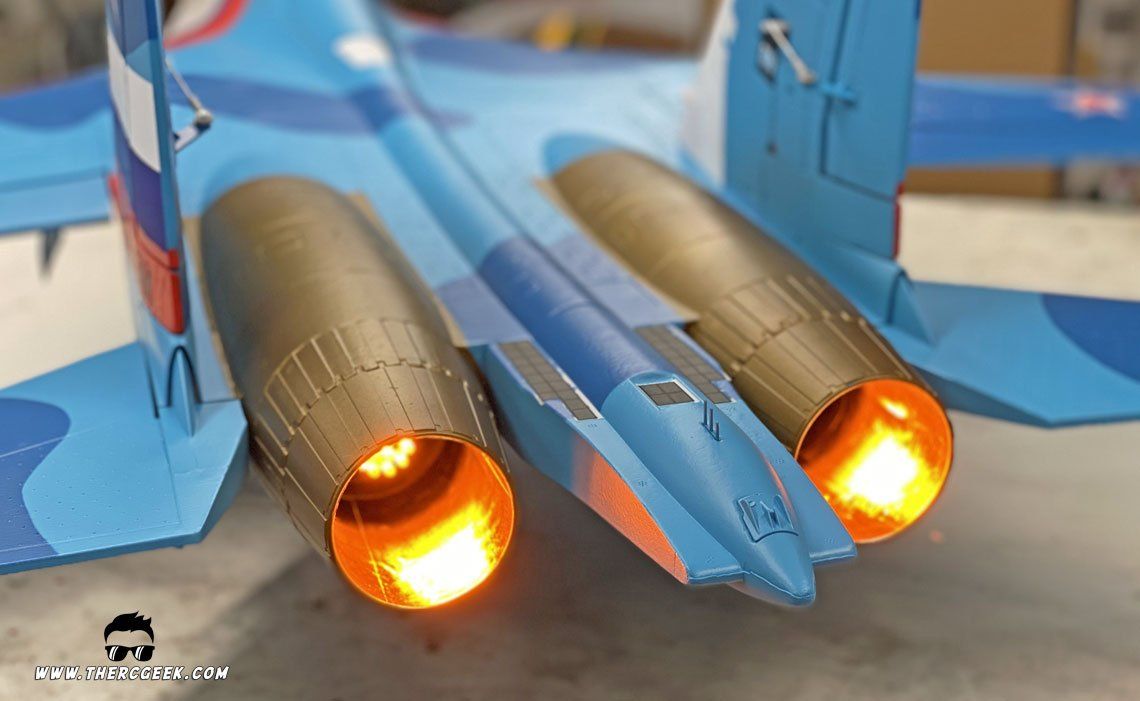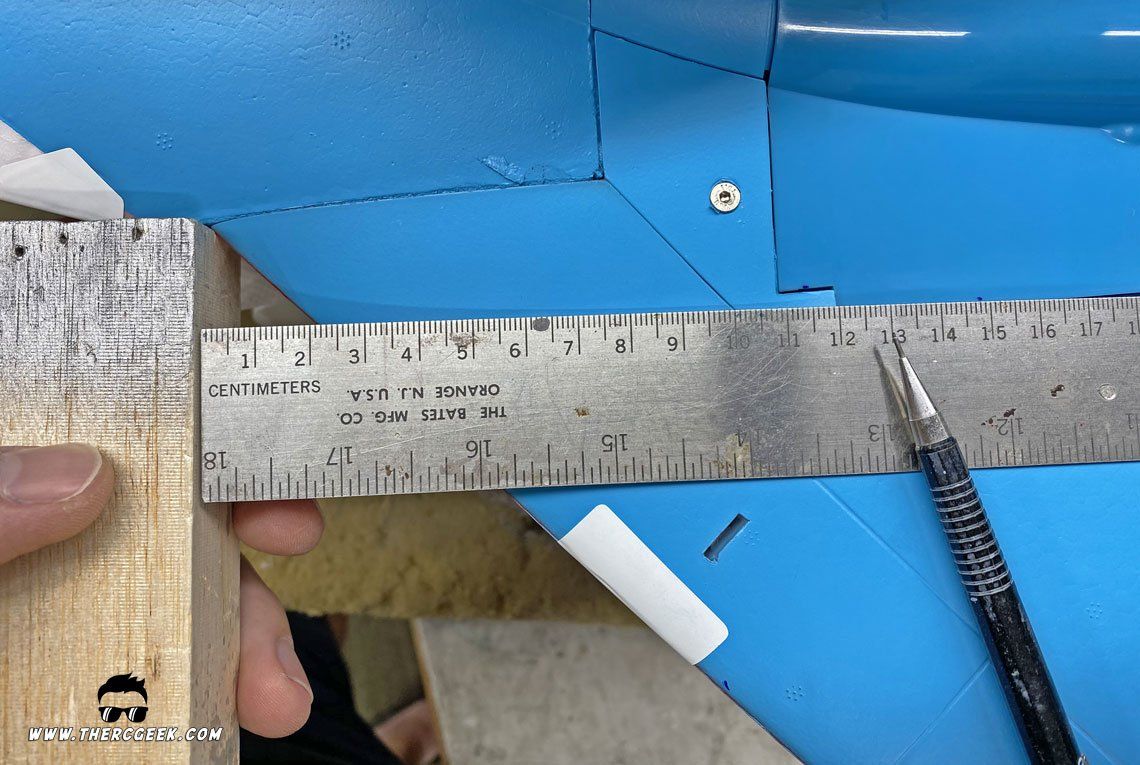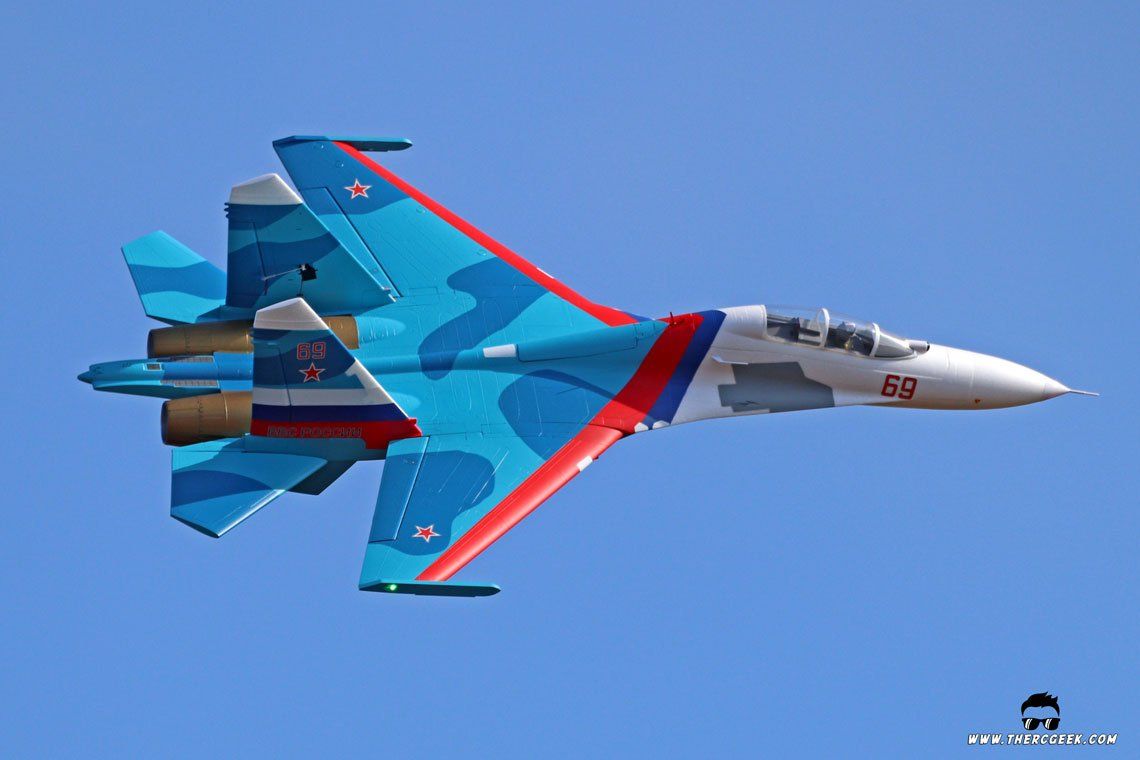The RC Geek Blog
By: Chris Wolfe
The Iconic SU-30...It's a Flanker-C, see?!
When talking about modern Russian fighter jets, the Sukhoi SU-27 Flanker family of aircraft are truly unmistakable. Designed as an air superiority multi-role fighter, it is an extremely capable jet with extremely impressive maneuverability (especially when paired with multi-axis thrust vectoring). The SU-30 represents a powerful evolution within the Flanker family adding further capability into the design including the addition of a second crew member for multi-mission capability, upgraded avionics and additional operational endurance and range.
So, after seeing the E-flite SU-30 twin 70mm EDF at the last AMA West trade show, it was only a matter of time before one would enter the hangar as it was undoubtedly a sweet ride! The SU-30 kit itself is one of the nicest EDF foam jets that I have seen to date being of a great size and featuring robust scale landing gear, a scale speed brake and a finish that could make most modelers drool. Flying the airplane further confirmed just how nice this airplane truly is as it looks incredible in the air and flies extremely well.
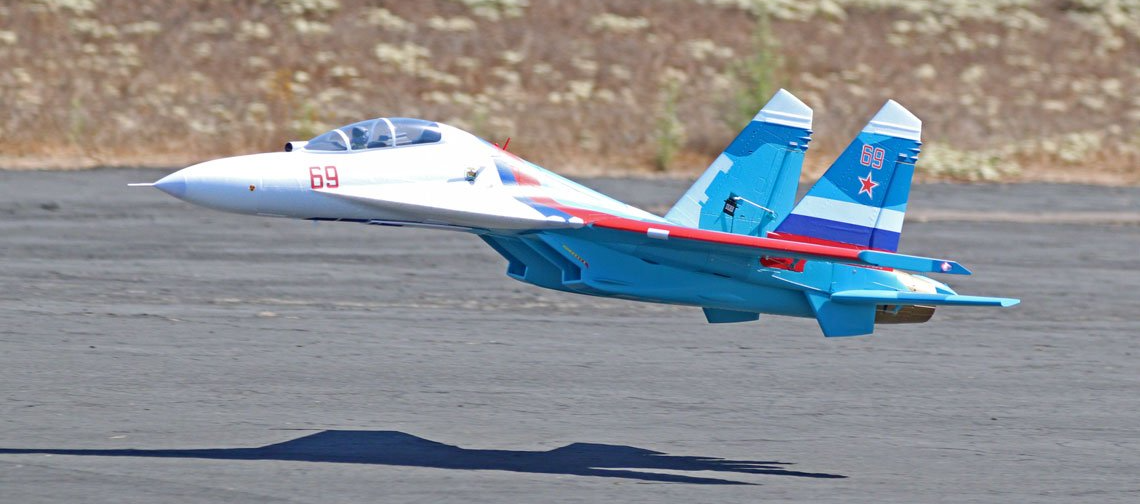
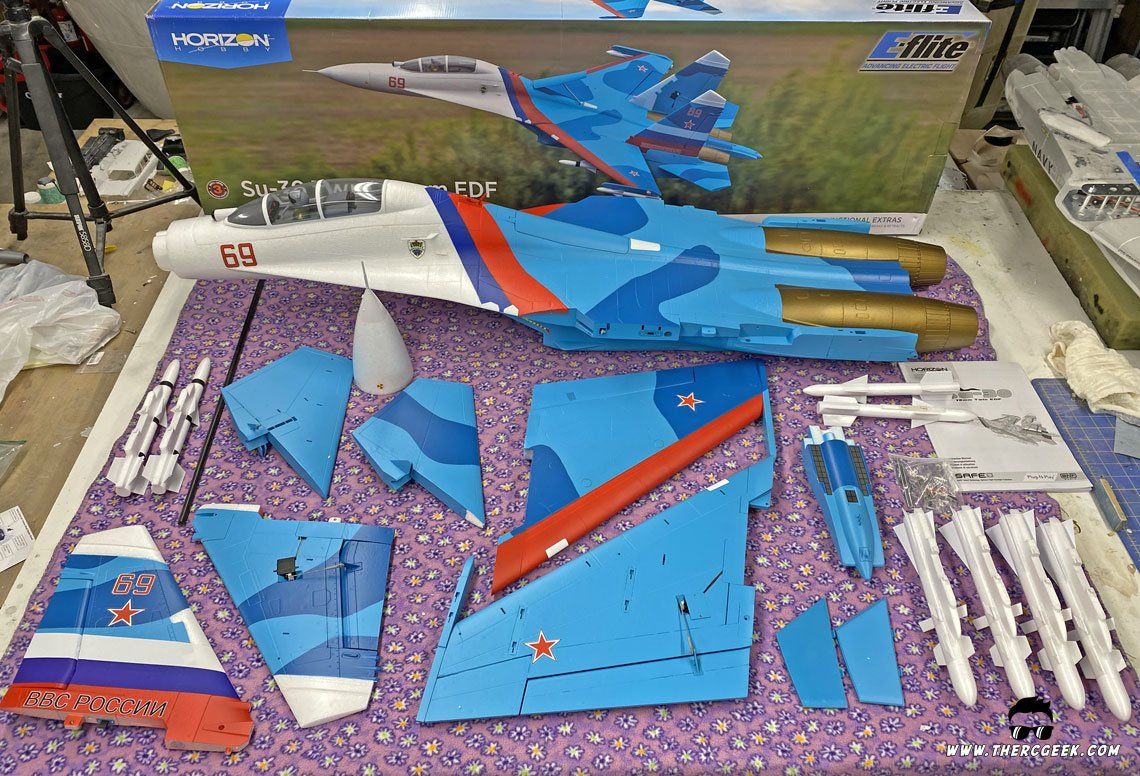
AIRCRAFT ASSEMBLY NOTES
Immediately upon arrival, you start to get a sense of the size of E-flite SU-30 and it's packaged in quite a large box. The model is broken down into all of the major assemblies and so assembly itself is quite simple (the airframe is assembled with only 10 screws!). Once unpacked, assembly begins with attachment of the vertical tails followed by the horizontal tail pivot rods and tails. From there the wings are installed followed by the ventral fins and then it's on to the radio setup. In short, assembly was quick and simple!
With the airplane assembled and on its gear, you are struck with the unmistakable Sukhoi shape of the SU-30. The outline of the model looks great and the paint, fit, and finish is excellent…not to mention that it is a nice large airframe taking up a good portion of the workbench. There's a full complement of missiles as well should you choose to fly with them (ultimately, they add flight time robbing drag, so I never did fly with them on). Additionally, the scale landing gear look incredible and there are a full complement gear doors as well. It had been a while since I'd seen one of these jets assembled and having it setting on my bench, I was reminded at just how nice of a model it is. If I had one wish, the white areas are bare foam, so I do wish they were painted white. That said, it's an easy prospect to paint those areas using frog tape and a replacement set of markings.
The one modification I had to make was to add twin MiniBurners into the airplane. This is my newer design for the smaller fans and it really adds a whole other dimension to this airplane in flight. Installation consists of removing the fans and unplugging the ESC wires. From there, the wires are fed through a slot in the tailcone and then the tailcone placed onto the back of the motor. 3 set screws hold the tailcone in place. From there, the fan wires are reconnected to the ESCs and the fans installed back into the airframe. The controller wires were then routed forward into the canopy hatch area (for this install, some 12" servo extensions were necessary to get the right wire length) and the controller connected via a y-harness with the throttle channel. I originally had lined the exhausts with aluminum tape, but the tape began peeling up on the first few flights, so I removed it. I didn't notice any difference in brightness.
AIRCRAFT SETUP & CG
For the aircraft setup, this is the bind and fly version of which means that it includes SAFE select. I have a previous discussion on setting that up here should you want to know more about that. The thing to keep in mind is that there are two bind procedures whether SAFE on or off is desired. In my case here, I wanted SAFE off, so I simply bound the airplane normally for SAFE off. This is a high performance scale jet, so you'll certainly have more fun without safe than with. :)
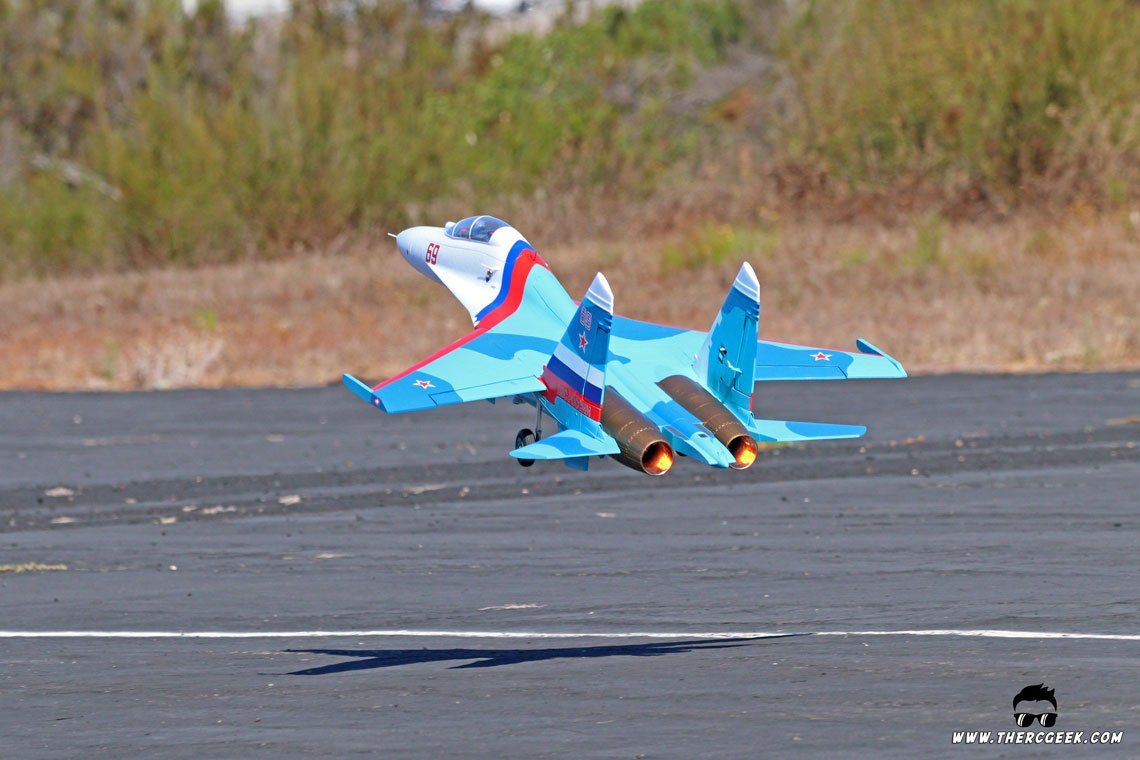
On the control surface setup, I prefer to setup individual elevator and aileron triple rates so I have options for the maiden flight. Through flying the airplane I ultimately converged on my high rates all around as that provided the best feel in the air. My final recommended control throws are as follows:
- Elevator - 52mm up/40mm down with 5% expo (note the elevator should be centered carrying a slight up elevator per the instructions. Also, when setting the pushrods, be sure to sight the elevators so they are set symmetrically to each other)
- Aileron - 18mm with 10% Expo
- Rudder - 20mm with 15% expo to desensitize the steering
Note that there are no flaps as the airplane has a scale single aileron control surface on each wing. Ultimately, it would be nice to play with flaperons and tailerons, but that would also require replacing the receiver that comes in the BnF in favor of one with more channels. Additionally, some modifications to the existing plug configuration would be required to split out the two aileron and tail servos as currently, the two sets of servo wires are each are y-harnessed together, but in a semi permanent way with the two wires combined into a single plug at the receiver for each.
For the CG, the airplane is being flown at around the mid location of the CG noted in the manual. This equates to approximately 125-130mm as measured from the wing leading edge root aft. I'm using a Spektrum 30c 6s 7000 mah SMART battery pushed as far back in the battery area as possible and this was where the CG fell out. The airplane may be a touch nose heavy, but as a whole it feels good in the air and lands quite nicely. The timer is set to 3:30 minutes is the setup for landing timer, so in air time is about 4 minutes.
FLYING THE E-FLITE SU-30 TWIN 70mm EDF
The hope with a model that looks as good as this SU-30 is that it will fly equally as well and I'm happy to report that the airplane really flies beautifully. The configuration lends itself well to a good flying model and that is certainly the case here. What really strikes you is just how nice and scale the airplane looks while flying and maneuvering around. The airplane locks in really true, is responsive on the controls, maneuvers well, and has a good speed envelope. Though, it's not the fastest EDF jet on the block, it does have good speed at full throttle, especially coming out of a shallow dive and with that speed penetrates into the vertical well. Without that speed into the vertical, expect smaller uplines.
Being as large and heavy as this airplane is, it really slows down nicely for landings. The speed brake is a nice addition and helps drag the airplane up a bit which helps and there's no discernible pitch change either, so there's really no reason not to use it. The airplane does like a nice pitch up attitude during landing using power to help manage the descent rate. Interestingly, it takes only just a little power (even with the speed brake up) to establish the right descent rate into the landing. A nice combination of flare and power can really get you some nice soft touchdowns.
FINAL THOUGHTS
The E-flite SU-30 twin 70mm EDF is such a nice airplane. The airframe quality and finish set the bar in terms of foam EDF jets in my mind, it is that nice! Add to that the airplane has great flight characteristics and good performance, so it has the entire package. I'm really looking forward to getting more flights on this one! Until next time, I'll see you at the field!
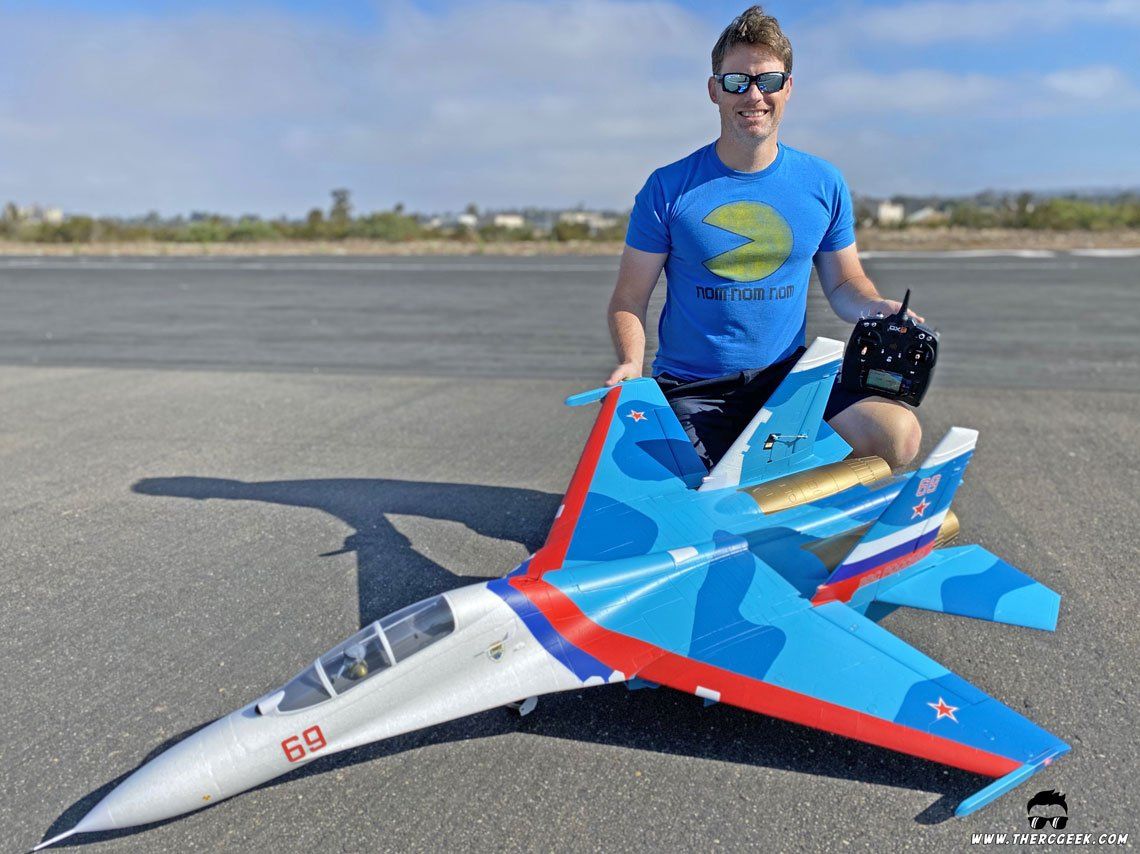
The RC Geek Blog is your place to learn about all aspects of the RC hobby. Learn to build, design, drive or fly that RC project you’ve always wanted to build, but have been intimidated to try. This blog is here to help you on your journey and provide tips and tricks as you go! My hope is to inspire builders both experienced and new! So, welcome, please look around, it’s an exciting beginning! I’m currently documenting my latest competition scale RC jet build, a Mark Frankel F4D Skyray, along with some other fun tips and videos. If you can’t find what you’re looking for on this front page, click on any of the categories to the right and it will show just posts related to those categories. Please feel free to add comments and/or contact me directly if you have questions, I’m here to help! And don’t forget to check out my YouTube Channel, I post new videos every week!
Subscribe To Our Blog Now










